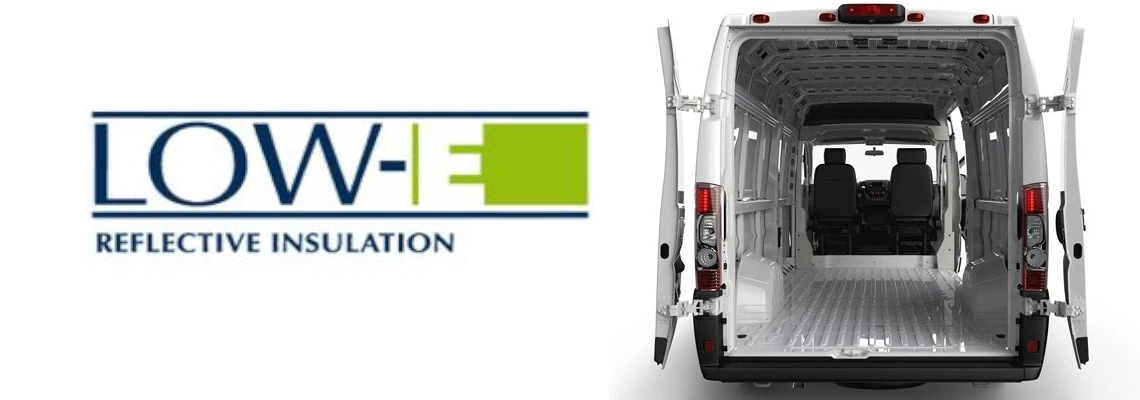
PREPARING TO INCORPORATE REFLECTIVE FOIL INSULATION IN YOUR VAN?
If your wanderlust takes you to colder climes, the first task on your DIY camper agenda should be insulation. The quality of your holiday experience will hang in the balance, depending on the insulation material you choose.
If you're planning to be a frequent road-tripper, you'll require insulation that can work its magic, reflecting heat away from your cozy living space. After all, all vans are crafted from metal, which comes with its natural chill.
Adding insulation becomes an absolute necessity to keep the inside snug, making it an indispensable addition to your camper project.
The world of campervan insulation is vast, offering various approaches to achieving warmth and comfort. In the pages that follow, this article will guide you through a tried-and-true method, helping you bring your camper dreams to life
LOW-E™ REFLECTIVE FOIL INSULATION
Low-E reflective foil insulation is an excellent choice for insulating campervan. It also comes in tightly spooled rolls of shiny, reflective, foil-look insulation that resembles bubble wrap.
It's flexible enough to bend back on itself. While this does not provide the most insulation, it is cheap and easy to install but when used in conjunction with panel insulation, it greatly improves the heat-holding capacity of your caravan.
Heat will not escape via the outer walls due to the reflecting properties. As a result, hot and cold air will have a harder time passing through the outside walls.
So when insulating a campervan, you want to have what’s known as a “radiant barrier”.
However, before you install reflective foil you should fully understand exactly how it works.
HOW LOW-E INSULATION WORKS?
Lets's say you have your van here and your van is subject to temperature changes because its outside.
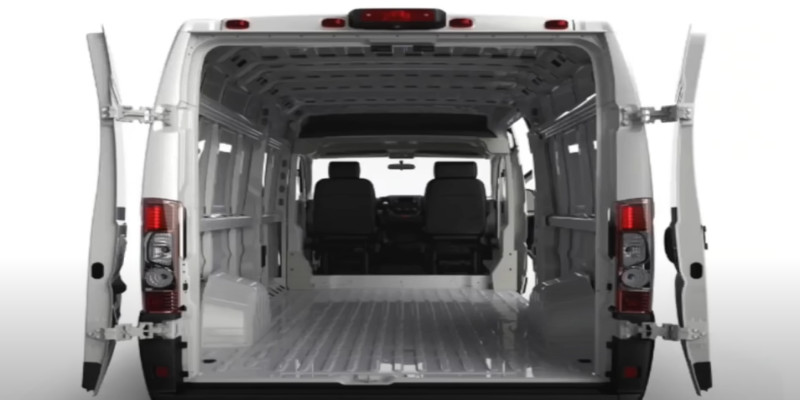
White Van with open back doors
Picture credit: https://www.youtube.com/watch?v=Pt8XmrpOziU
In the summertime, Sun generates a lot of heat and with the bare metal walls of your van, there is nothing stopping that heat from travelling right through those walls and directly into your living space.
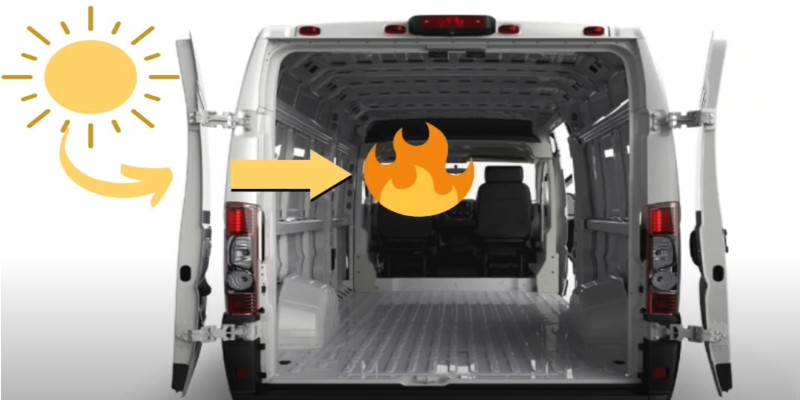
Van gets hot in summer
Picture credit: https://www.youtube.com/watch?v=Pt8XmrpOziU
And then in the winter time you can pretty much expect the same exact thing except with cold air instead of hot air.
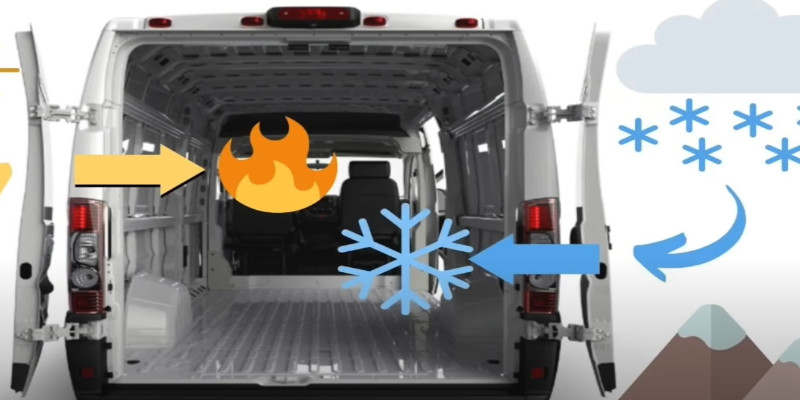
Van gets cold in winter
Picture credit: https://www.youtube.com/watch?v=Pt8XmrpOziU
Let's say you wanted to prevent this from happening. So you decide to install some insulation and you choose to use Low-E™ Reflective Foil Insulation.
If you choose to install the Low-E™ product the way it's shown in below picture there is basically no gap between the metal wall and the Low-E™ foil itself.
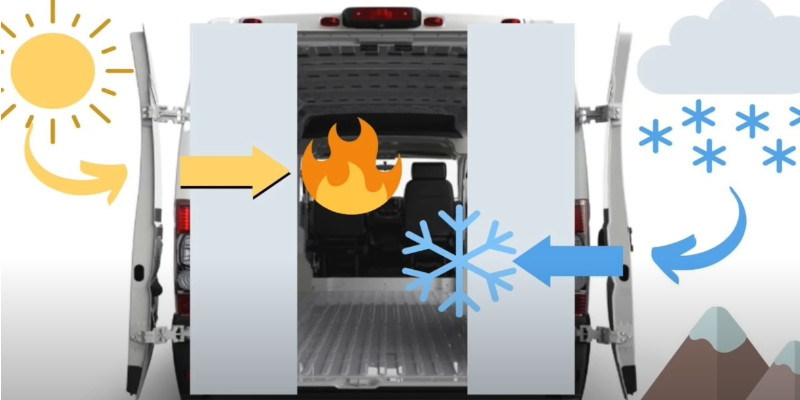
No gap between van wall and reflective foil insulation
Picture credit: https://www.youtube.com/watch?v=Pt8XmrpOziU
You really don't have any insulation at all. The reason for that is because the Low-E insulation itself does not act as actual insulation.
All it does is what is says in the name- it reflects temeperature. It needs a little bit of a gap in order to face that tempereature to reflect it.
So if you are about to glue your foil directly onto your metal wall and there is no air gap at all- well, the heat or the cold is just going to go right through it as if the Low-E foil was the wall itself!
When you install Low-E reflective foil you want to have what's known as a radiant barrier.
Basically what this just means is that you have a few inches in between the metal wall and the Low-E foil itself and what you can see below picture is that the temeprature is actually coming inside the van a few inches and then once it hits that reflective wall it bounces off and travels back outside.
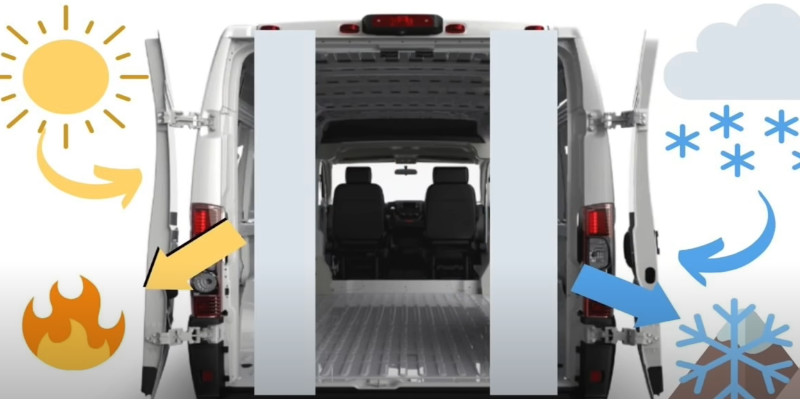
Gap left between wall and reflective foil insulation
Picture credit: https://www.youtube.com/watch?v=Pt8XmrpOziU
So now you understand the basic concept of it.
Just to repeat that again. You will need some type of foam board insulation pieces to make that void needed in order to your reflecive foil work.
Here is how you can do this.
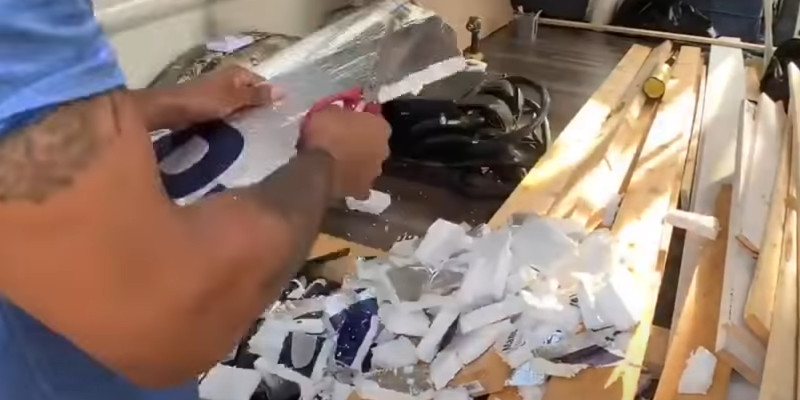
Man cutting insulation board into small cubes
Picture credit: https://www.youtube.com/watch?v=Pt8XmrpOziU
First thing you do is chopping up some foam board insulation into small cubes.
Next you set up a gun with ahesive and you starting gluing cubes about 6 inches away from each other on the wall.
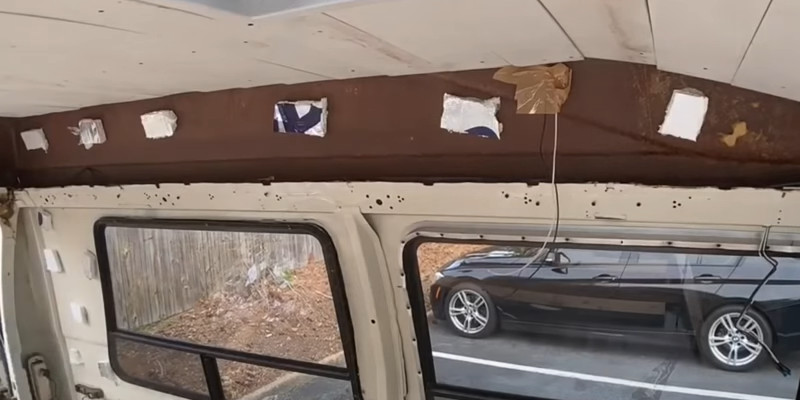
Insulation distances glued to a wall
Picture credit: https://www.youtube.com/watch?v=Pt8XmrpOziU
Then you bringing out a role of Low-E foil insulation an by using same adhesive, you connect the Low-E product to those cubes of insulation that you just installed.
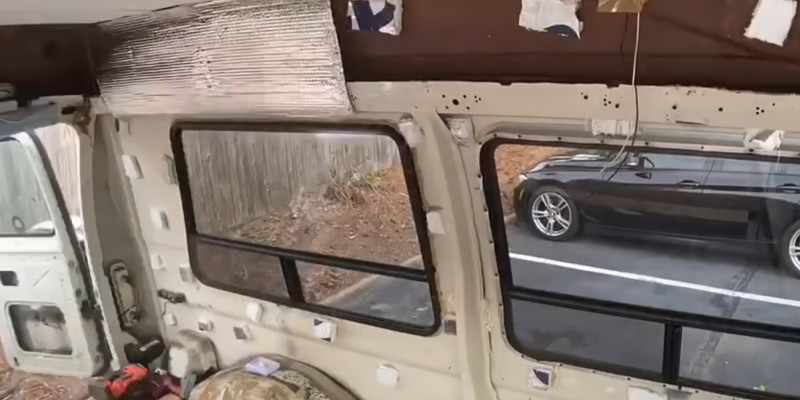
Reflective foil insulation glued to distances
Picture credit: https://www.youtube.com/watch?v=Pt8XmrpOziU
The idea here is that since the reflecive foil is connected to the cubes and not to the wall itself there is about 1’’ inch gap in between the foil and the metal wall.
That is what you should be looking for here.
Please note, there is more then one way to do this and as long as you have some of a gap of air in between your Low-E in the wall that it should still perform the same way.
As a result, the campervan may be used at any time of the year, keeping the heat out in the summer and the cold out in the winter.
Then you can put sub wall or whatever else you are trying to build directly onto the reflective foil on the other side.
Just because you are working in a van that it should’t be done differently but it's really meant to be used the same way that it would be in a house in any kind of insulating situation.
HOW MUCH INSULATION DO I NEED TO INSULATE A CAMPERVAN?
It is recommend overestimating the amount that you will need as it is better to have a little too much than be left short.
The image below gives a general guideline for how much insulation is required in the most common van models.
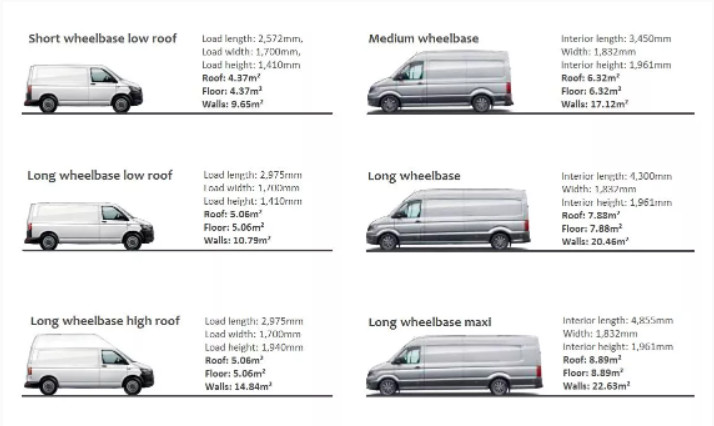
Picture credit: https://low-e.co.uk/
DO I NEED A VAPOUR BARRIER IN MY CAMPERVAN?
Vapour barrier will prevent water vapour from seeping into the insulation and causing frost buildup on the panels, which can cause cracks that reduce thermal performance.
It is not necessary to have a vapour barrier if you are using the right type of insulation. Low-E reflective foil insulation is acts also as a vapour barrier. It is designed to reduce life cycle running costs, provide moisture protection, stops draughts, deaden sound but most importantly, to tackle issues which are usually left unaddressed by traditional bulkier insulation products.
HOW THICK INSULATION DO I NEED IN A CAMPERVAN?
In general, the thicker the insulation, the better it will perform. The R-Value of insulation measures its capability to withstand the flow of heat. Foil insulation achieves an R-value in two ways. The first is through the resistance of the core of the material.
Second is through the air layer adjacent to the foil surface. Low-E insulation does have tested R-values but more importantly, its aluminum surfaces have an emissivity of 0.03, which equates to 97% of radiant heat being stopped and reflected back to its source.
WHAT HAPPENS IF YOU DON’T INSULATE YOUR CAMPERVAN?
If you don’t insulate your campervvan, you will lose a significant amount of heat in the winter and gain a lot of heat in the summer.
Adding insulation to your campervan walls can make a big difference in the amount of heat required to keep it warm.
DOES REFLECTIVE INSULATION REALLY WORKS?
Yes, by allowing ONLY 3% of radiant energy to pass throug, you will see noticeable temperature changes in your campervan.
Low-E allows you to upgrade the efficiency of your campervan at very little cost to you. This material is an accessible and perfect solution to get you on the track to more energy efficient and comfortable campervan.
VENTILLATION?
You need to ventilate your van to prevent excess condensation and damp. Fans are ideal as they can extract food smells and moisture out as well as using reverse settings to pull in cold air if you are in a hot country.
Bibliography
1. youtube.com, “How to Install Reflectix as Insulation in a Camper Van” July 19, 2019, accesed May 6,2022
https://www.youtube.com/watch?v=Pt8XmrpOziU
2. theaa.com, Welford Ted “Converting a van into a camper: What you need to know” July 21,accessed May 6, 2022
https://www.theaa.com/cars/news/guides/converting-a-van-into-a-camper-what-you-need-to-know-aa-cars-14471.html
2. caravanfaqs.com “How To Insulate A Caravan Wall” , accessed May 6, 2022
https://caravanfaqs.com/caravan-upgrades/how-to-insulate-a-caravan-wall/
*All the information provided in the content published on Insulationgo blog is for informational and educational purposes only. Insulationgo LTD makes every effort to ensure the accuracy and timeliness of the content, but we do not assume any responsibility for any errors or omissions.
The information presented on this blog should not be considered as professional advice or a substitute for consulting relevant experts. Before making any purchase decisions or taking action based on the information presented here, it is strongly recommended to contact the product manufacturer directly to verify the details and ensure its suitability for your specific needs.
By using this blog, you acknowledge and agree that Insulationgo LTD shall not be held liable for any damages, losses, or inconveniences arising from the use or reliance on the information provided herein. This limitation of liability applies to all users of the blog, including but not limited to visitors, readers, and subscribers.










































































































